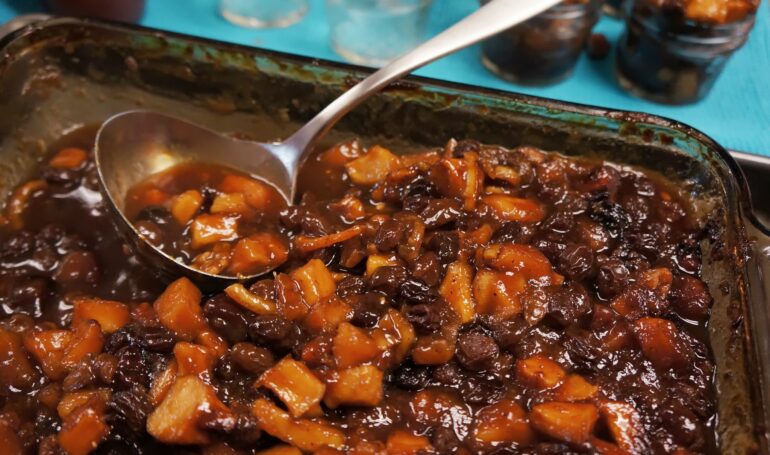
Food Friday : Plumtastic – A Farmers Market Love Story
Something that has taken hold of me over the last several years is touring farmers’ markets where ever I go. It is an obscene fetish really. When I spot a hand painted sign with that alluring phrase, “Farmers’ Market Today”, I have an irresistible compulsion to detour from whatever I am doing, no matter how urgent, necessary or time-limited, to visit the farmers market.
Although I had no need for more vegetables since I just picked up my weekly CSA share, I found myself browsing the Farmers’ Market at Harvard University in front of the Science Center. Yes, I was on my way elsewhere. Yes, I did do two victory laps to find parking. But, yes, I did have to be there.
While perusing the stalls, I went through my CSA inventory in my head. Carrots? Got a bunch. Onions? Got those too. Lettuce? Seriously, could I possibly need more lettuce between the garden and the CSA? How’s about squash? Despite the vine borer devastation, there was still plenty. Then, my eyes landed upon this pile of redish, purplish, yellowish jewels.
What the hell are those? They sort of resemble a large cherry tomato, but the color is off. Could they be some strange heirloom or hybrid variety I wasn’t familiar with? My mind flipped through my Johnny’s Seeds catalog. Nope, I didn’t think they were tomatoes. So, I snatched one up at rolled it around in my palm. Suddenly, I realized this little treasure was an early season plum. As it turns out, it was a Methley plum. Methley plums are a variety of open-pollinated Japanese plums that can flower as early as February and produces fruit May through July.
The yellowish color still holding on underneath the patches of purple and red bruises made me think they were still slightly under ripe, but I decided I must have a box anyway. Besides, I was certain I could hunt up a variety of canning options to use them up anyway.
When I got home with my lucky find, I decided to take one for a test drive. To my surprise, they were not under ripe at all. They were like bite sized balloons of sugary flesh. When I popped on in my mouth and pierced the skin, much like a cherry tomato, juices burst from the fruit. But, unlike a cherry tomato, the juice wasn’t acidic and savory, but sweet, tart and as dense with plum flavor as a jar of jam. While they were in abundance at the Farmers’ Market, I congratulated myself for such an incredible find as if I had hunted down a rare species on my own.
Of course, given my obsessive compulsive behavior at farmers’ markets, I did still have nearly 5 pounds of these sugary little treats to contend with. Hey, at least this addiction is healthy and good for the local economy, so don’t judge. Fortunately, plums are a high pectin fruit, thus, as I suspected, many options for preserving plums abound. Plum sauce, plum chutney, plum conserves, plum jelly, plum jam, whole plums, plums in syrup. . . well, you get the idea. Considering all the options, I settled on two – plum sauce and a very sexy sounding ‘Plum and Apple Mincemeat’. I will tell about my homemade versus Chinese restaurant plum sauce throwdown at a later date.
Based on what I had on hand, I modified the ‘Plum and Apple Mincemeat’ recipe from The River Cottage Preserves Handbook. As the book explains, this isn’t exactly a ‘mincemeat’. First, it has no meat, but that isn’t really necessary. Second, it has no suet which is actually part of most mincemeats. In fact, it only has the fat of walnuts. Except for the ‘traditional mincemeat’ spices, really it isn’t a mincemeat at all. However, I am not one to let strict definitions get in the way of trying something out that seems yummy. So, ‘Plum and Apple Mincemeat’ it was.
While it’s still summer, the cloves, ginger and nutmeg make this mincemeat reminiscent of wintry, holiday flavors. Although it is cooked for more than two hours at low temperature, it remains chunky and multi-textured. The apple pieces, cranberries and raisin provide a sturdy backbone for the sweet plum-orange puree while the pecans add a bit of toothy, meatiness to the blend. While I only tried it when directly spooning it from the baking dish to my mouth , I figure a 4-oz jar can be thinned with some white wine to make an excellent sauce for some pan-fried pork chops. I do look forward updating you when that opportunity arrives.
The River Cottage Preserves Handbook is somewhat sparse on details and this recipe was no exception. Given the long ingredient list, I didn’t find the two paragraphs of instructions did it much justice. So, I will try to fill in some details here. I decided to do a half recipe and use 4-oz canning jars for easier portioning.
Plum and Apple Mincement
Adapted from The River Cottage Preserves Handbook. My substitutions noted in parentheses with acronym TRCPH
1-1/8 lb plums
3 oranges – zest then juice for 3/4 cup, plus 2T juice
9 oz Braeburn Apples (TRCPH calls for russet)
5/8 C Dried Cranberries (TRCPH calls for currants)
1-1/4 C Thompson Raisins (TRCPH calls for regular and golden raisins)
1/4 C Orange Marmalade
5/8 C Brown Sugar
1/4 t Ground Cloves
1 t Ground Ginger
1 t Ground Nutmeg
1/2 C Pecans (TRCPH calls for Walnuts)
1/4 C Dry Sherry (TRCPH calls for Brandy or Gin)
1. Prepping (20 minutes)
Cut and halve the plums. Unfortunately, my special Methley plums were not freestone (meaning the pit doesn’t ‘stick’ to the fruit), so I had to cut the fruit away from the pit. Zest and juice the oranges. Core and dice the apples.
2. Make Plum Puree (20 minutes)
Simmer the plums and orange juice over medium heat for 15 minutes or until the plums are tender. Puree in a blender then strain the puree through a fine mesh sieve.
3. Blend and Rest all ingredients (12 hours)
In a large bowl, combine the puree and the remaining ingredients (except the sherry). Cover and let stand for 12 hours.
4. Bake (2-1/2 hours)
Preheat the oven to 250F (typically the high end of ‘warm’). In a large baking dish, bake the mincemeat uncovered for 2-1/2 hours until the apples are tender and the sauce has thickened to a syrup. The mixture should reach 190F internal temperature) Stir in sherry.
5. Can and Process (1 hour)
Sterilize 8 4-oz jars in boiling water for 10 minutes (see the USDA Complete Guide to Home Canning and Preserving for more information). Hot fill the jars with the mincemeat.
TRCPH does not provide very clear instructions for processing and sealing the mincemeat. The book is from the UK and many of the methods described in it do not always fall under the US Food Safe rules. Per those rules, the method described in TRCPH (twisting a lid onto a jar full of hot mincemeat or sealing with food grade paraffin wax) are not safe. Personally, I felt more comfortable waterbath processing over simply twisting lids onto hot mincement and storing it for a year. I opted to do a 20 minute waterbath process with this disclaimer. It may be possible to also to treat this as a freezer or refrigerator jam.
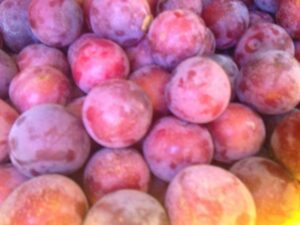
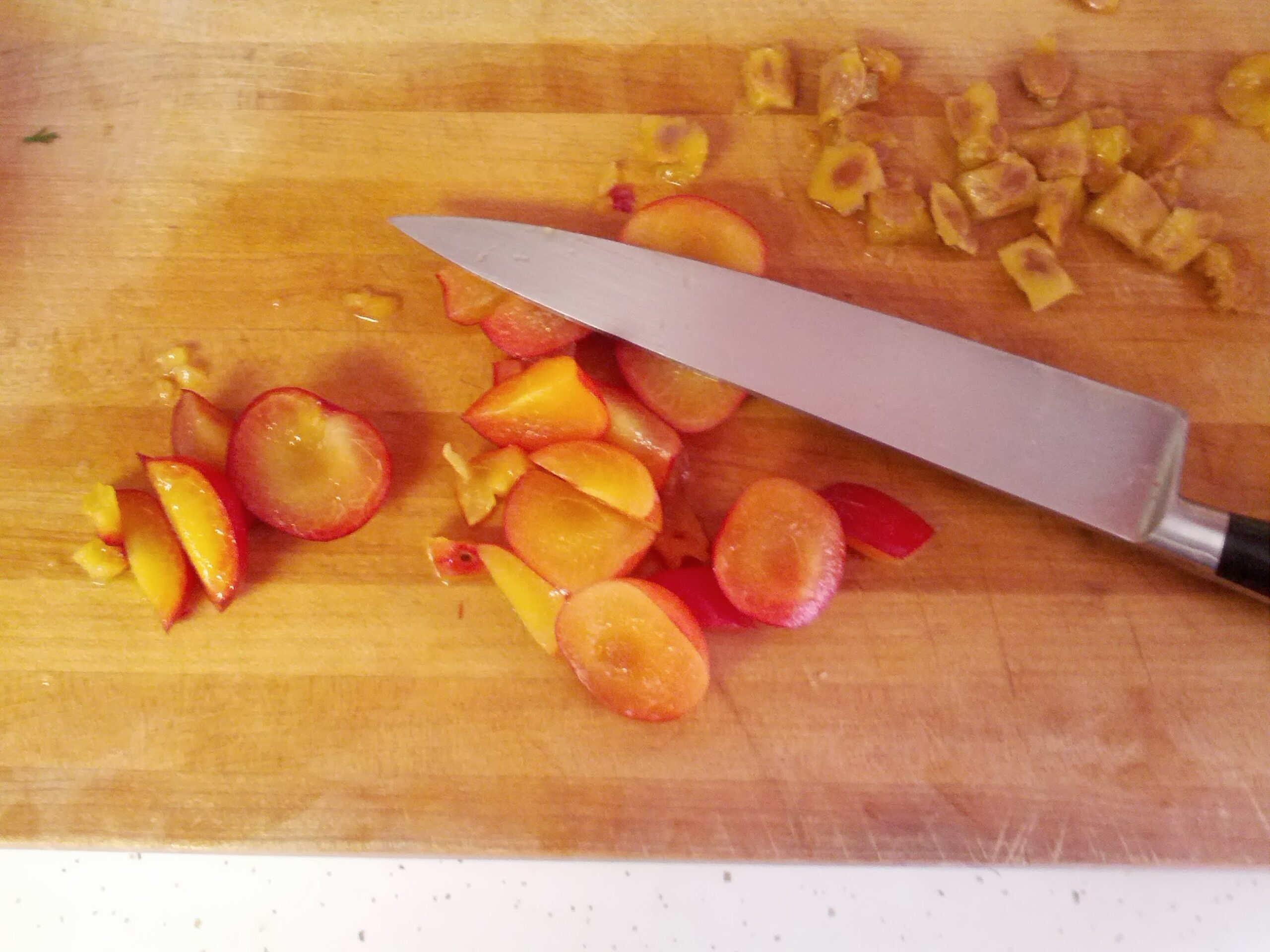


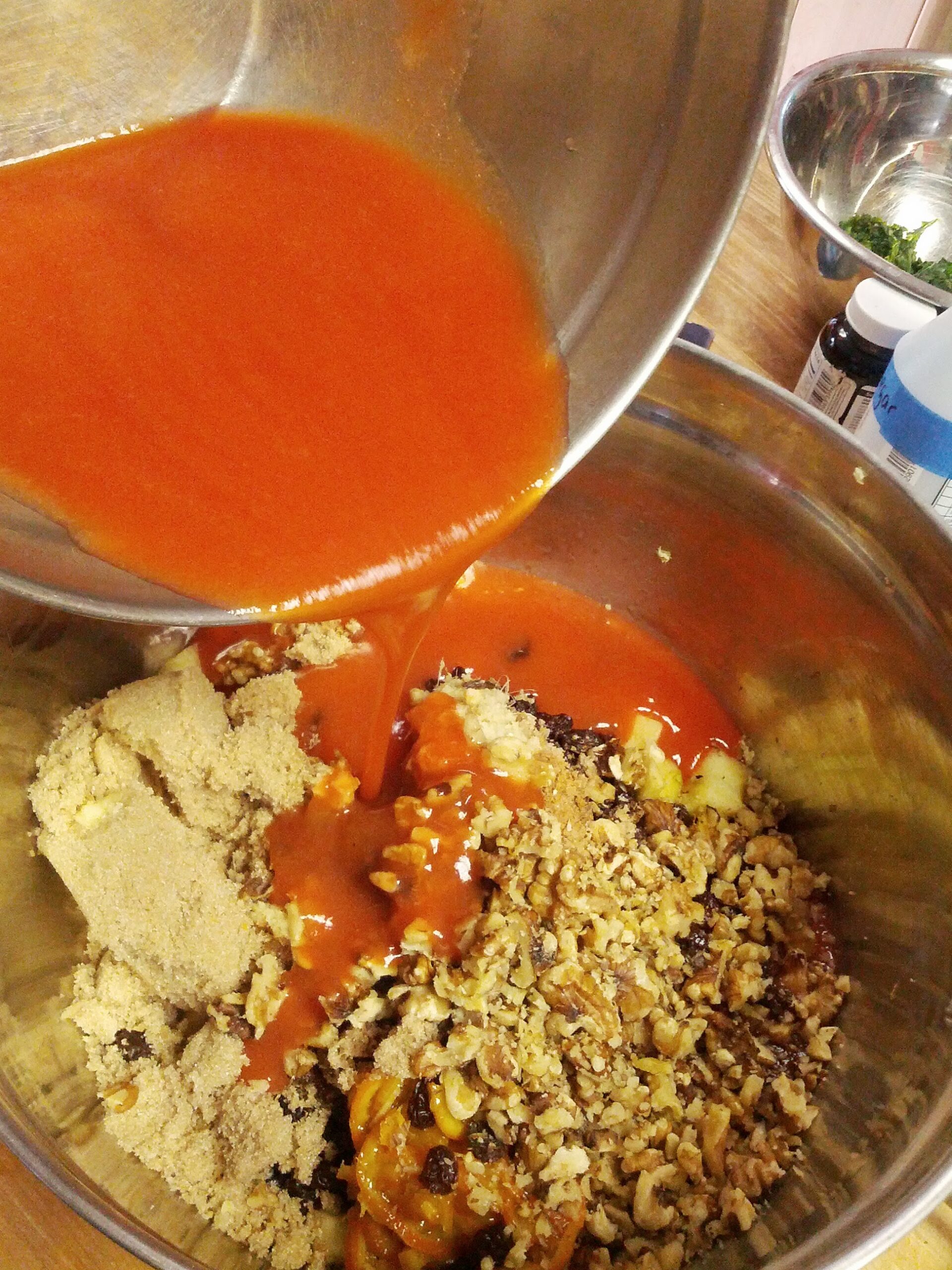
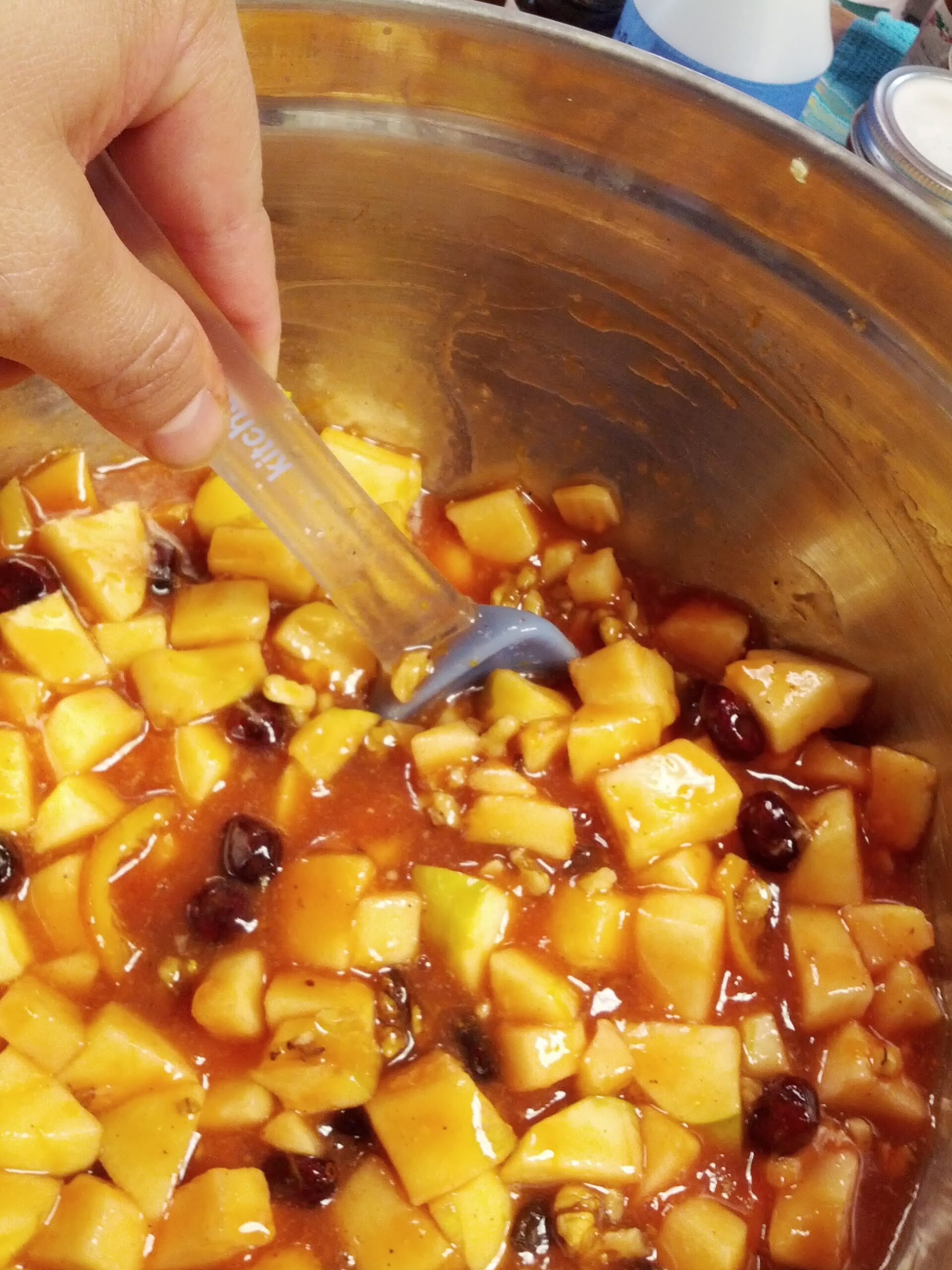
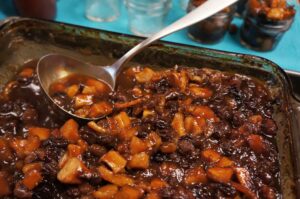
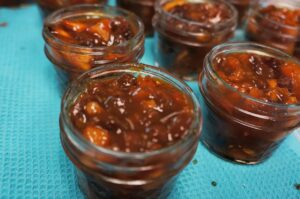
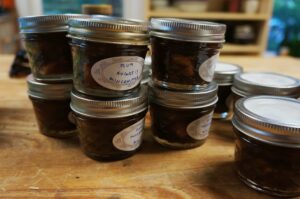
Leave a Reply